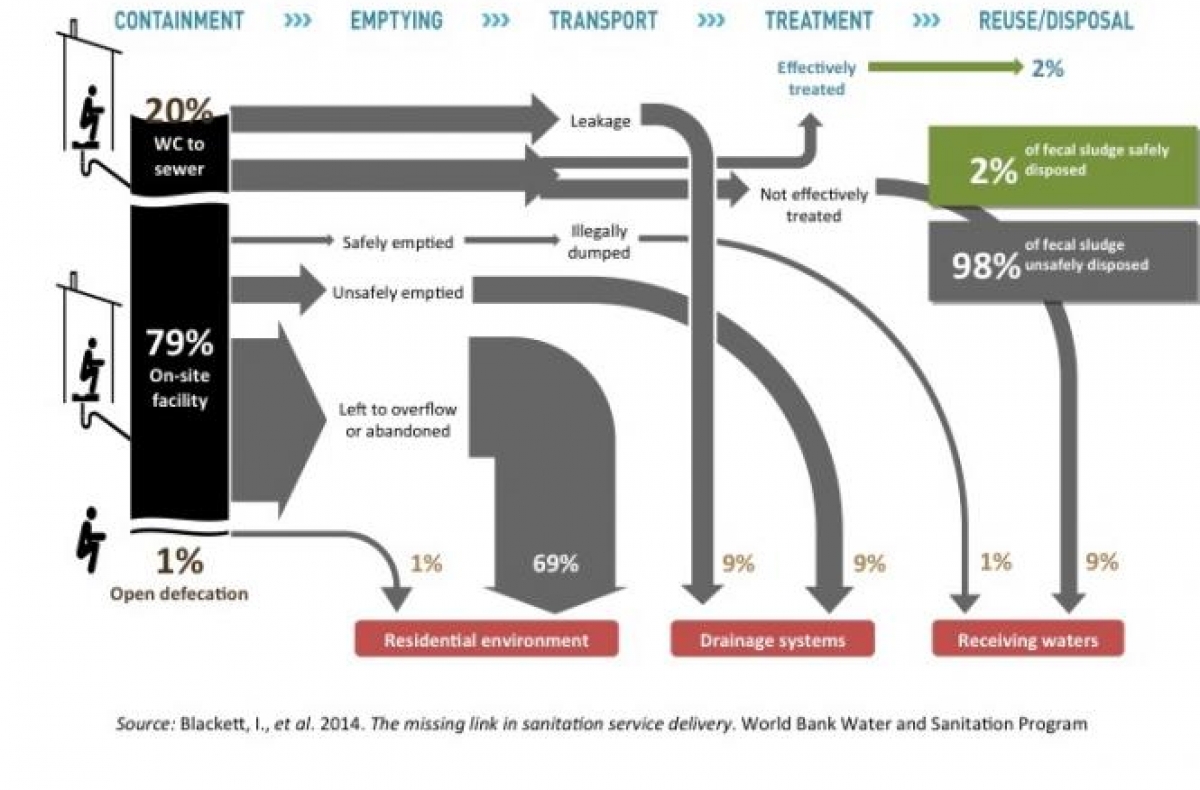Beyond the toilet
WHD faculty lead Jenna Davis explains why cleaning up water sources could have measurable impacts on the economy of cities and countries.
January 9, 2018

Credit: Jenna Davis
Should we rethink World Toilet Day?
Don't get me wrong – raising awareness about the plight of the 2.4 billion people without a toilet is definitely a worthy cause. Lack of access to sanitation facilities is an affront to human dignity. It also creates a major public health risk of diarrheal diseases that kill about 1,300 children a day in the developing world.
The good news is the death rate from diarrheal diseases almost halved between 2000 and 2015. Does this mean that efforts to expand access to toilets – efforts promoted by events like World Toilet Day (Nov. 19) – are saving lives? The answer is yes and no.
Parallel developments such as the introduction of rotavirus vaccination, better and quicker care for those suffering from diarrheal illness, and nutritional gains for children in some regions have helped. At the same time, access to toilets is critical for capturing human waste that can carry disease-causing micro-organisms, thus reducing the risk that others in the community will be infected. Californians were reminded of this fact by the recent hepatitis A outbreak, which emerged in communities that lack access to housing and sanitation facilities.
Equally important for public health protection, however, is the transport and treatment of toilet waste before it is discharged into the environment. A recent UN report estimates that roughly 80% of global urban wastewater is released without treatment. The World Bank’s Water & Sanitation Program has helped to make that broad statistic more visible at the local level with its municipal “shit flow diagram” project. In the Bangladeshi capital of Dhaka, for example, 99% of the 15 million inhabitants have access to a toilet—but only 2% of human waste is adequately treated before being dumped into surface water bodies nearby. As a result, this low-lying, flood-prone megacity is continually coated in sewage.
Shifting international attention from the provision of toilets to ensuring safe management of human wastes is starting to happen. A few years ago I served on a technical working group convened by UNICEF and the World Health Organization that was tasked with developing recommendations for the new UN Sustainable Development Goals (SDGs) on sanitation. Along with several other colleagues on the team, I felt strongly that waste management—and not simply ‘butts on toilets’—had to be given priority within the new targets.
Our efforts were successful. The SDG target 6.2 is to ensure universal access to safely managed sanitation service by 2030. A household’s access is defined not simply by whether they have a toilet, but whether they have a sanitation service that includes safe storage, transport and adequate treatment of waste. The shift in definition has also drawn attention to the much larger gap in human waste management as compared to toilet access. In 2015, 68% of the world’s population had access to a toilet of reasonably good quality, but only 39% had safely managed sanitation.
Identifying political, financial, social, and technical strategies to bring safely managed sanitation service to the 4.4 billion people without it is a mammoth task. Efforts such as container-based sanitation can target hard-to-reach communities, and advancing the science and engineering for resource recovery from wastewater can help improve the economics of sanitation services. Ultimately, it is these beyond-the-toilet efforts that must be stepped up in order to make definitive progress against the burden of diarrheal disease.
Contact Information
Rob Jordan
Associate Editor, Environment and Sustainability, Woods Institute
rjordan@stanford.edu


